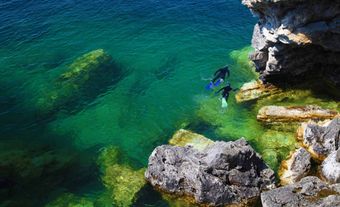In 1797 the British army built FORT ST JOSEPH on the southwestern corner of the island, at the time the most westerly military post in Canada. It became a rendezvous for traders and Aboriginal people, and though it was destroyed in the WAR OF 1812, its remains are visible and have been preserved as a national historic site. Agricultural settlement occurred late in the 19th century.
Today most of the island's population live in 2 communities, Hilton Beach and Richards Landing. The island is known for its MAPLE SYRUP and as a tourist destination. A bridge (built in 1972) connects it to the mainland across St Joseph Channel, a principal navigation route. The St Joseph Island Museum Village traces the history of the island from the fur trade to the mid 20th century.

 Share on Facebook
Share on Facebook Share on X
Share on X Share by Email
Share by Email Share on Google Classroom
Share on Google Classroom

